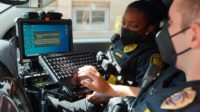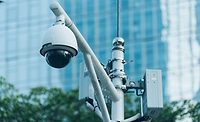Navigating the ins and outs of mobile duress systems as part of a comprehensive building or campus safety plan can be daunting. Personal emergency response systems (PERS) have been in the spotlight for decades – offering alarm and monitoring services, primarily for at-home medical emergencies. While these systems have had great utility for individuals in residential environments, there is a significant need for commercial duress systems whose capabilities extend beyond those of PERS in order to provide protection in a building or campus setting. This is where enterprise mobile duress (EMD) systems come into play.
While PERS and enterprise mobile duress systems have similarities in terms of providing assistance to people in need, they are quite different when it comes to equipment they use, target markets/application, the type of protection they provide, the size of their coverage area and even who the responders are when a call for help is initiated.
PERS systems are intended for at-home individuals who may require assistance in their household. These systems are typically marketed to the senior population who desire a way to call for help, most often in the absence of immediate family assistance, should they have a medical emergency and are unable to reach a telephone.
PERS systems usually consist of three components: a small, close-range, wireless radio transmitter or panic button, worn or carried by the individual; a console or receiver, connected to the telephone; and a 24-hour response center that provides call monitoring. When help is needed, the individual presses the panic button, which sends a signal to the console. The console then automatically dials an emergency telephone number, typically to the monitoring center. The monitoring center maintains a file about the individual containing medical information and who should be contacted in the event of an emergency, all of which could be helpful should the call necessitate a 911 response.
Conversely, enterprise mobile duress systems are typically used in large campus settings, such as hospitals, medical centers and college campuses and as such require long-range wireless transmitters. Since campuses usually employ staff whose primary responsibility is to administer aid, whether healthcare- or security-related, notification and response plays a much larger role. Enterprise mobile duress systems are scalable to cover any size environment so the solution is not limited to a residence, and the number of people they can protect is virtually limitless.
While enterprise mobile duress systems also rely on wireless panic buttons worn or carried by individuals, the network infrastructure and notification methods are vastly different. Because enterprise mobile duress systems are designed to protect any number of mobile individuals ranging from a handful to thousands across large campus-like environments, the network infrastructure must be more robust. Most enterprise mobile duress systems rely on a wireless repeater backbone that not only allows for complete coverage of a campus environment, but also offers the capability to provide the precise location of an emergency event when the panic button is pressed.
Location, within a building or campus setting, is one of the main differentiators between enterprise mobile duress and PERS.
Another important difference is that enterprise mobile duress systems offer notification options that are far more sophisticated than what is used by PERS. Enterprise mobile duress systems generally augment physical security systems that are already in place. Therefore, they also must have the ability to integrate into existing emergency notification equipment and protocols for the facility. For instance, a hospital may already have roaming security officers on site with two-way radios. In this case, the enterprise mobile duress system will initiate a voice call to those officers over their radios in the event of an emergency indicating the exact location and type of response needed.
Enterprise mobile duress systems can be configured to provide on-site notifications via email, overhead pagers, display boards or even the phone system. When it comes to notification of potential threats, active shooters or any other such emergency, the notification methods of an enterprise mobile duress system can be completely customized based on the facility’s needs.
At first blush, PERS and enterprise mobile duress systems may appear to be quite similar because of their activation methods, but that’s where the similarities stop. When it comes to their practical applications, it becomes clear that they are not interchangeable. While PERS offer a great solution to individuals in residential environments, they are no substitute for enterprise mobile duress systems that protect large groups of people in a campus setting.
Enterprise Mobile Duress vs Personal Emergency Response Systems
| Enterprise Mobile Duress (EMD) | Personal Emergency Response System (PERS) | |
| People Protected | Unlimited | Individuals/Households |
| Infrastructure (Backbone) | Long-Range Wireless | Short-range wireless |
| Markets | Hospitals / Medical Centers | Individual Residences |
| Coverage Areas | Large Campuses | House or Apartment |
| Location Capabilities | Precise to Room Level | Not Typical |
| Responders | On-Site Security/Nursing/Staff | Call Centers |




